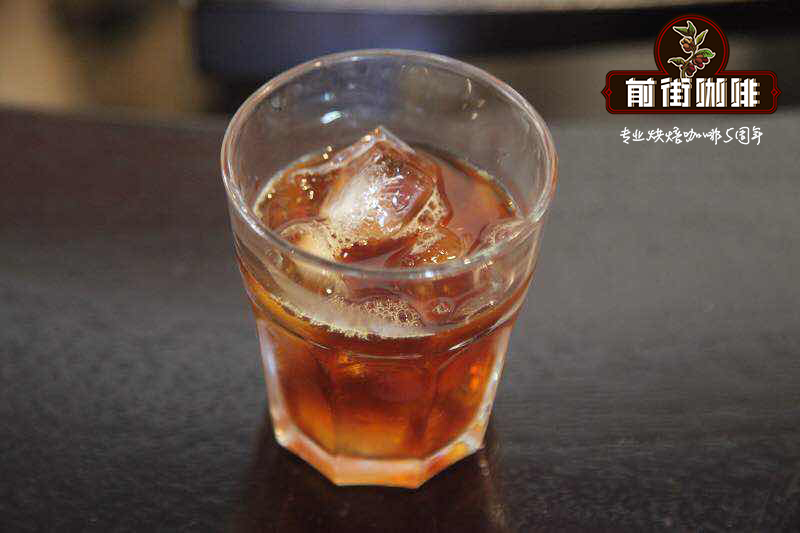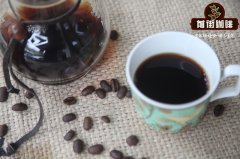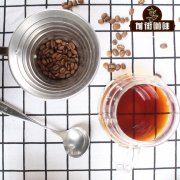What are the steps in the coffee cup test? What tools do you need? What are the scoring items in the cup test?

Professional coffee knowledge exchange more coffee bean information please follow the coffee workshop (Wechat official account cafe_style)
What are the steps in the coffee cup test? What tools do you need? What are the scoring items in the cup test?
1. Essential equipment for coffee analysis: clean water: do not use contaminated water. Do not use distilled water and processed soft water.
Coffee spoon: stainless steel or magnetic spoon can be used instead.
Glass or magnetic cup with a capacity of 150 kb: three cups for each sample.
Coffee tray: prepare a plastic tray for each sample.
Coffee spoon: a deeper coffee spoon for sipping and stirring coffee.
Record sheet.
Coffee beans.
2. Coffee evaluation method: cup test, also known as coffee quality evaluation.
The cup test is a method to systematically analyze the aroma and taste characteristics of coffee by using standard brewing and tasting steps. Usually with the help of the reviewer's sense of smell, taste, and oral sensation.
Prepare the sample: brew the coffee directly in water without using other media (such as filter paper), which will filter out the aroma or mix its taste (like the taste of paper) into the coffee. Put the fresh coffee powder 7.25g into a magnetic cup or glass and pour 150g about 90-96 ℃ hot water directly into the cup. The coffee powder will float to the surface and will gradually sink after soaking. After about 3-5 minutes, gently stir the coffee powder floating on it, mix it well with water and sink to the bottom of the cup. Scoop out the coffee powder that has not sunk to the bottom of the cup. Note that clean water that does not contain chlorine and other chemicals must be used to avoid smelling. Remember that a cup of coffee contains 99% water.
Sensory evaluation: in order to stimulate the nerves, the actions of smelling, sipping, and swallowing should be exaggerated during the cup test.
The cup test consists of six steps: analyzing the aroma, aroma, taste, smell, aftertaste, and concentration of coffee.
a. The aroma pours the fresh coffee powder sample into the cup, and after the fresh coffee beans are ground into powder, the carbon dioxide in the cells will release the smell and smell it hard. The aroma characteristics show the essence of taste. Sweet means sour and pungent means irritating. The aroma intensity reflects the freshness of the sample from baking and grinding to sampling.
b. The aroma pours hot water into the coffee sample in the cup. The coffee powder will float on the surface and soak at rest for three minutes. Stir the coffee powder floating on it with a coffee spoon and suck in the air released by it with a deep and long nose. Can smell like fruit, grass, to stone fruit flavor. The smell is consistent with that of coffee beans. The intensity of aroma is related to the freshness of the sample.
c. Taste use a round coffee spoon to scoop 6-8 inches of coffee liquid, close to the lips, quickly and vigorously sip the coffee liquid, so that the coffee is fully distributed on the surface of the tongue, so that the taste buds are completely stimulated by sweet, salty, sour and bitter tastes. The temperature will react to the sensation, and different sensory positions will show different characteristics. For example, temperature reduces the sweetness of sugar, making the tip of the tongue feel the tingling of sour coffee first. Hold the coffee in your mouth for 3-5 seconds, pay attention to the intensity of its taste, and find out different tastes.
d. Olfactory Nose step 4 and step 3 are carried out at the same time. Strong suction of coffee into the mouth, with air, through the tongue, organic matter by evaporation from liquid to gaseous state. The strong inhalation action introduces the gas into the nasal cavity, and the sense of taste and smell act on the unique aroma of the sample at the same time. According to the standard baking degree, the smell can feel the caramelization of coffee beans (such as nutty, caramel, chocolate) according to different samples. For deep-baked samples, there are pine flavor, spice flavor, and carbon flavor.
e. Yu Yun (throat Rhyme)
In the imported brewed coffee, after a few seconds, the throat swallows a small part of it, causing moisture to rush through the back of the upper jaw into the nasal cavity. It leaves a smell like chocolate sweetness, even campfire or tobacco. The aftertaste may be like the irritating smell of cloves or turpentine, or even a combination of these smells.
f. Finally, explore the taste of the coffee liquid at the concentration of Body. The tongue slides gently across the top of the mouth. The oil in the coffee will feel greasy. Proteins show a sense of stickiness. The concentration of coffee consists of these two senses. After the coffee sample is cold, repeat the three to five steps of taste, smell and finish. Supplement the shadow of temperature in different ways. After the coffee is cold, make a second taste of coffee, you can get a more accurate effect. The cup test is usually used to compare two different coffee qualities. So that the cup tester can accurately distinguish the difference between the two samples. When the number of samples is large, the coffee liquid is usually spit into another cup without swallowing it. Gargle with a small amount of water, clean the taste, and then try the next sample.
The results were recorded in the Coffee Analysis record Table in detail.
Important Notice :
前街咖啡 FrontStreet Coffee has moved to new addredd:
FrontStreet Coffee Address: 315,Donghua East Road,GuangZhou
Tel:020 38364473
- Prev

Are there any domestic coffee brands in Costa Rica? How would you like your Costa Rican coffee?
Professional coffee knowledge exchange more coffee bean information please follow the coffee workshop (Wechat official account cafe_style) first of all, let's talk about Costa Rica, which is located in the middle of slender Central America like an umbilical cord, bordering Nicaragua to the north and Panama to the south. Among the Central American countries, the political and economic security environment is extremely stable in a country whose livelihood industry is mainly agriculture, forestry and animal husbandry due to its ownership of Shu.
- Next

Cafe Britt, the largest coffee brand in Costa Rica, Costa Rican coffee beans hand-brewing parameters
Professional coffee knowledge exchange more coffee bean information please follow Coffee Workshop (Wechat official account cafe_style) Costa Rican coffee brand-Cafe Britt, founded in 1985, is the first world-famous coffee manufacturer in Costa Rica and the most famous coffee factory brand in Central America, with its own coffee garden. Costa Rican coffee brand-Cafe Britt is now available
Related
- Detailed explanation of Jadeite planting Land in Panamanian Jadeite Manor introduction to the grading system of Jadeite competitive bidding, Red bid, Green bid and Rose Summer
- Story of Coffee planting in Brenka region of Costa Rica Stonehenge Manor anaerobic heavy honey treatment of flavor mouth
- What's on the barrel of Blue Mountain Coffee beans?
- Can American coffee also pull flowers? How to use hot American style to pull out a good-looking pattern?
- Can you make a cold extract with coffee beans? What is the right proportion for cold-extracted coffee formula?
- Indonesian PWN Gold Mandrine Coffee Origin Features Flavor How to Chong? Mandolin coffee is American.
- A brief introduction to the flavor characteristics of Brazilian yellow bourbon coffee beans
- What is the effect of different water quality on the flavor of cold-extracted coffee? What kind of water is best for brewing coffee?
- Why do you think of Rose Summer whenever you mention Panamanian coffee?
- Introduction to the characteristics of authentic blue mountain coffee bean producing areas? What is the CIB Coffee Authority in Jamaica?

